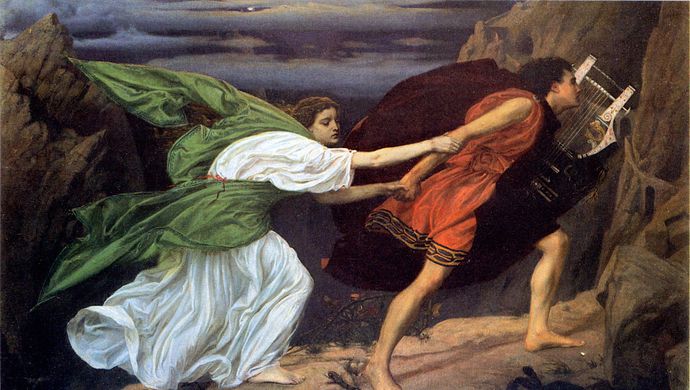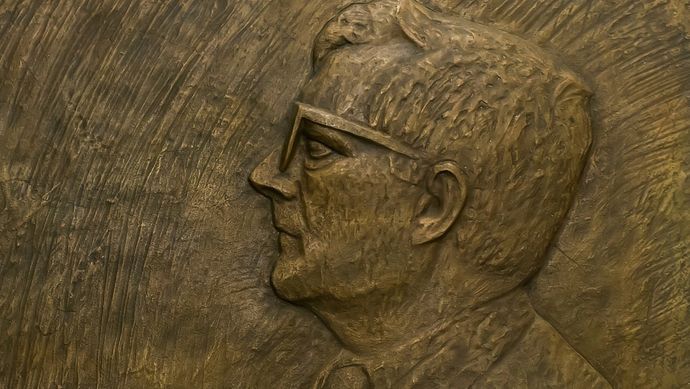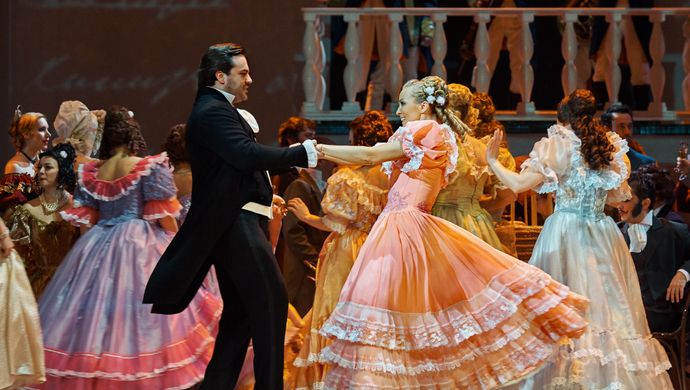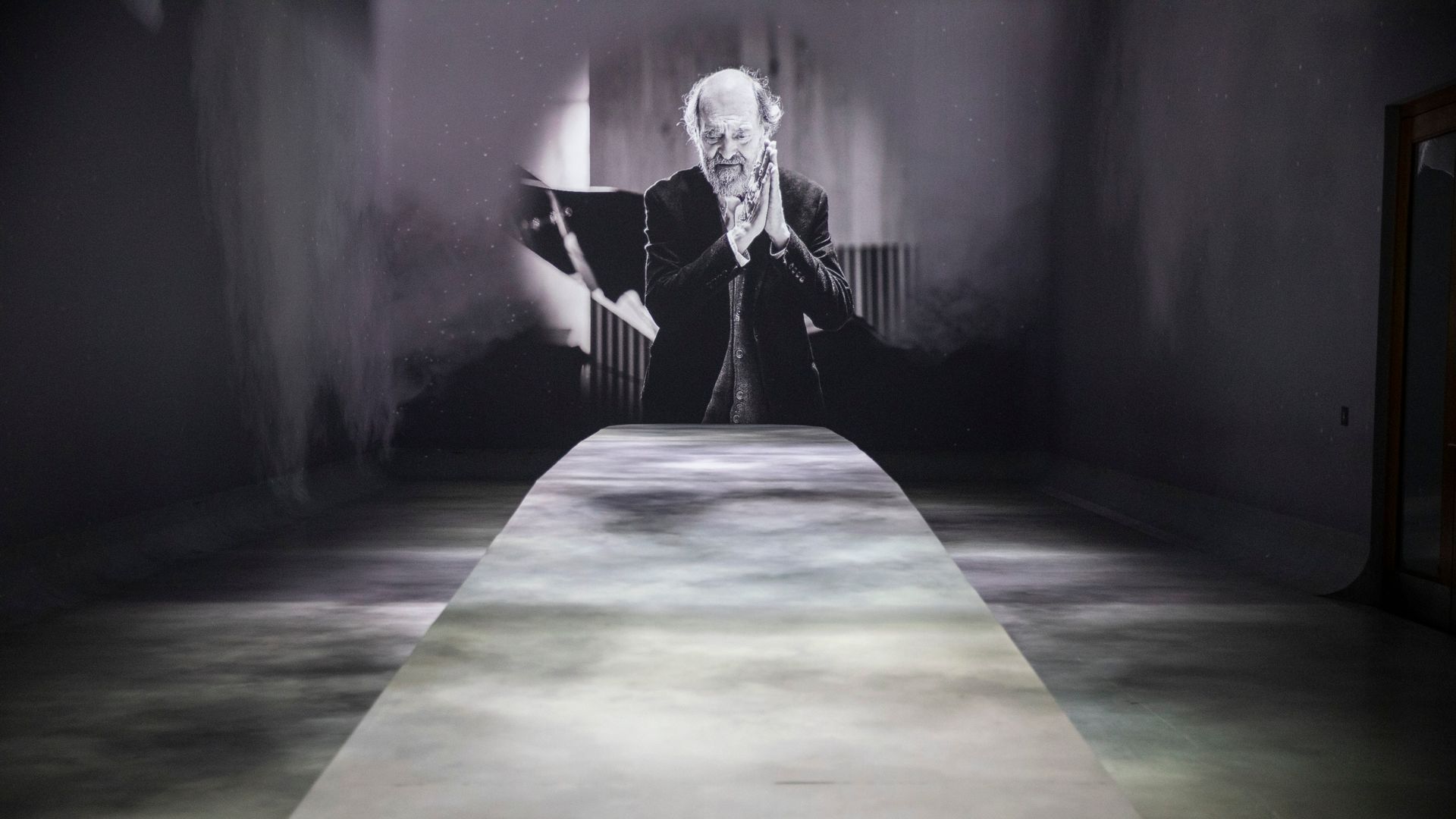
Everything about composer Arvo Pärt
January 2025, article, text: Luc den Bakker
Arvo Pärt, who celebrates his 90th birthday this year, is one of the most popular living composers. He is loved by fans of contemporary classical music, but also of jazz, rock or early music. What is typical about Arvo Pärt’s music? We are happy to help you understand his style.
Arvo Pärt was born in 1935 in Estonia. Less than half a decade later, however, this country would loose its autonomy, a status it didn't regain untill the ninties. As the dust of World War 2 settled, Pärt and his compatriots now found themselves in the Estonian republic of the Soviet Union. He came of age in the Khrushchev era, when the Soviet leadership took a milder turn after the terrible years under Stalin. As a young composer he experimented with the techniques of the western avant-garde. But even though the Soviet Union was a less repressive place in these years, the atonal, ‘western’ music remained unwelcome. The works that Pärt composed in these years put him in trouble with the authorities.
Tintinnabuli
Apparently Pärt himself was also not so comfortable with the modernist style of composing, as he soon chose a different direction. From the late 1960s on he began to simplify his music, with tonal melodies and a lot of repetition. He developed a composition style that he called ‘tintinnabuli’. The name derives from the Latin term tintinnabulum, which means ‘ringing bells’. It is a composition style characterised by two musical voices, one that only plays the notes of a triad, and one that drapes a melody across this in stepwise fashion. (Also see the video, 'How Arvo Pärt tintinnabulates')
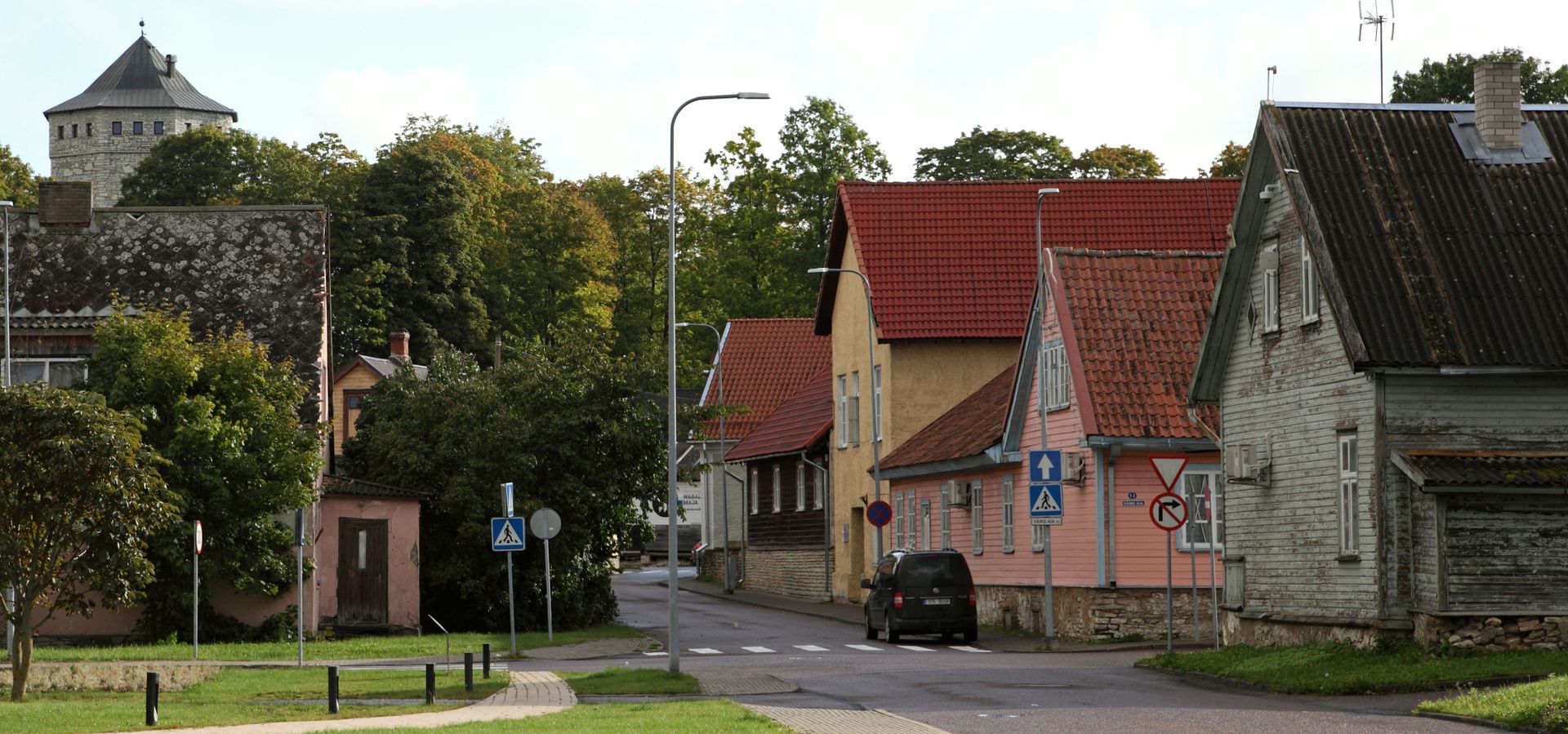
Pärt’s major breakthrough came with a piano work from 1976 titled Für Alina. A simple melody is played across a sustained bass note. The structure is inspired by a medieval music practice, but at the same time it sounds absolutely unique and contemporary. It is not a ‘neo style’, but a type of music that could not have been written in any other period of history. Nevertheless, the break with the modernist West European avant-garde is evident: notes are played that are in no way apologetic about cherishing a bond with the past.
Tabula Rasa
Less than two years after Für Alina, Pärt released a composition that made him famous in the West as well: Tabula Rasa (1977). The composition is written for two solo violinists, strings and a so-called ‘prepared piano’. This is an ordinary piano but with objects placed between the strings, according to the composer’s instructions: a technique that Pärt adopted from the American composer John Cage. This changes the sound of the piano to resemble a chime. The strings continually play a kind of fade-in, fade-out, creating islands of music in a sea of silence. The effect is nothing short of entrancing.
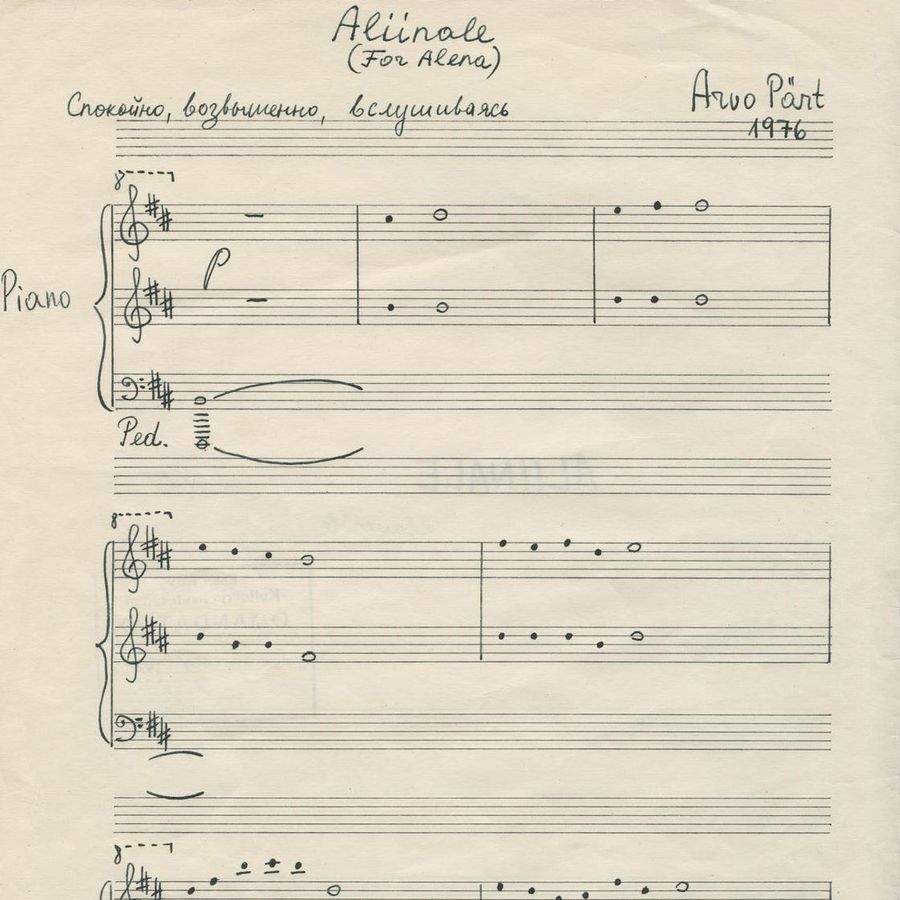
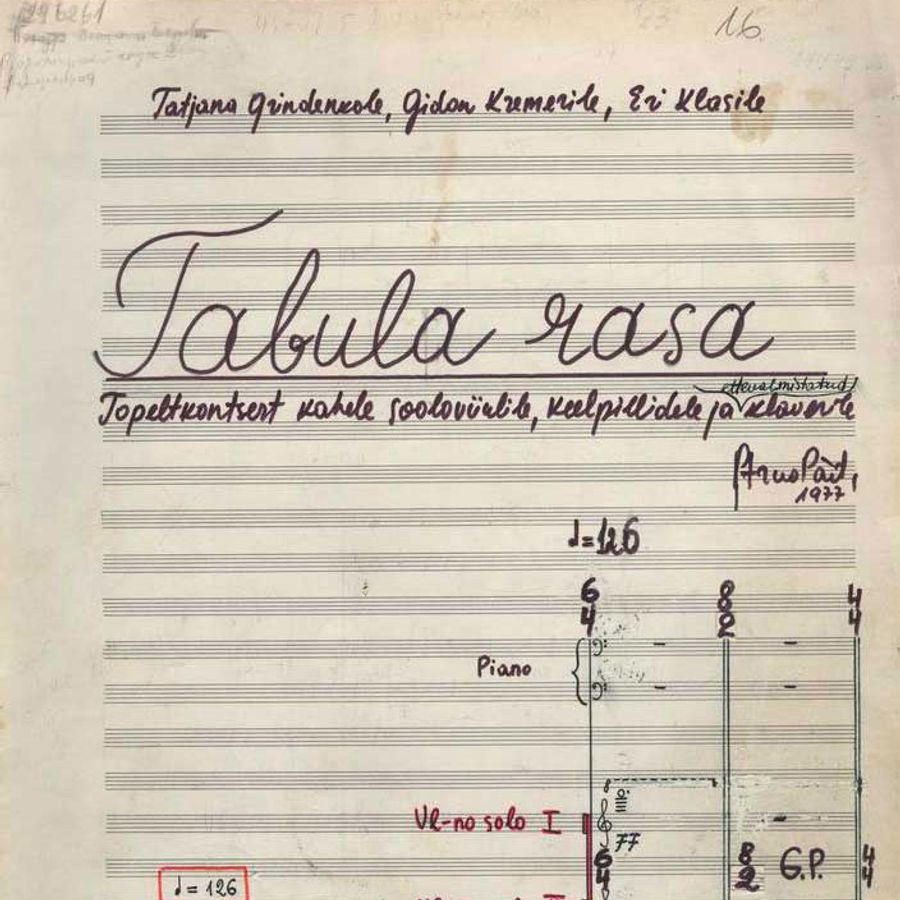
Following a radio broadcast in Germany, Tabula Rasa was discovered and released by ECM, a record label that had mainly concentrated on jazz until then. Thanks in part to this release, Pärt’s music suddenly reached a target group that was not previously interested in classical music.
New chapter
While Pärt’s music continued to gain in popularity, he decided to explore a new direction. Pärt’s compositions from the 1980s, starting with a St John’s Passion, were grandiose and explicitly religious. His interest in religious music again created tension with the authorities: the Soviet Union was ideologically anti-religion. This was one reason for Pärt’s decision to emigrate to West Germany.
Minimalist influences
Pärt’s musical development, as described above, did not take place in a vacuum. A parallel decvelpment could be observed taking place in the United States in the form of minimalist music. From the mid-60s, composers such as Steve Reich and Philip Glass were experimenting with repetitive musical patterns that develop through small variations: a technique they had adopted from musical traditions in Africa and Asia. The effect was pulsating and hypnotic. Pärt used comparable techniques but drew his inspiration from another culture, namely old European music such as the Gregorian chant. Equally hypnotic, but in this case not at all pulsating but meditative instead.
Pärt was drawn to this music by another movement of that time, the authentic performance practice. From the 1960s, musicians and musicologists set about rediscovering compositions from the Middle Ages, Renaissance and Baroque, and to perform them as they would have been performed at that time. They did so on restored or reconstructed instruments, with old performance techniques, tunings and tempos. What they discovered was a treasure trove of unique and surprising music, with techniques and tonal colours that must have sounded as exotic to a twentieth-century listener as music from other parts of the world.
So Arvo Pärt was not the only composer to strike out in this direction. His Polish colleagues Górecki and Penderecki were on a similar path, as can be heard clearly in Górecki’s Third Symphony. It is a striking fact that the rediscovery of spiritual, Christian-themed classical music occurred in the Communist Eastern Bloc, at a time when this was very uncommon in Western Europe.
Religious aesthetic
Pärt’s religious side is not just a return to a practice from the past. There is something unusual about his religious music: it is of too grand a scale, in terms of both instrumentation and duration, to play a role in a church service. The music is not intended for a chapel, but for a concert stage. Although it does borrow the aesthetics of religion, and perhaps also the spiritual fulfilment, in the end these works belong in the concert hall.
This innovative turn by Arvo Pärt – spirituality without organised religion attached – turned out to appeal to many. Pärt became one of the best loved composers of his time. His music is programmed all around the world for a large and diverse audience. There is clearly a hunger for what he has to offer: music that sounds pleasantly refreshing, draws unashamedly on the past, and offers a spiritual, meditative experience that allows the listener to briefly transcend the drudgery of everyday life.
In honour of his 90th birthday, Amare is devoting special attention to Arvo Pärt this year. For example, his composition Tabula Rasa can soon be enjoyed as part of the dance performance by Scapino Ballet Rotterdam, Cathedral, an evening with Arvo Pärt. His works will also be performed alongside compositions by Bach and Sufi music in concerts by Capella Amsterdam and the Nederlands Blazers Ensemble.
Be sure to keep on an eye on the rest of the 2025 programme for special events dedicated to Arvo Pärt!
Arvo Pärt and more in Amare
-
Past eventTue 25 Mar ’2520:15
-
-
Sat 15 Mar ’2520:15ZitplaatsenConcertzaal
-
Sat 15 Mar ’2520:15LigplaatsenConcertzaal
-
-
Past eventWed 12 Mar ’2520:15 - 21:50
-
Cathedral, an evening with Arvo Pärt
Scapino Ballet RotterdamTue 21 Jan / 19:45 - 21:00DanstheaterPast eventTue 21 Jan ’2519:45 - 21:00


